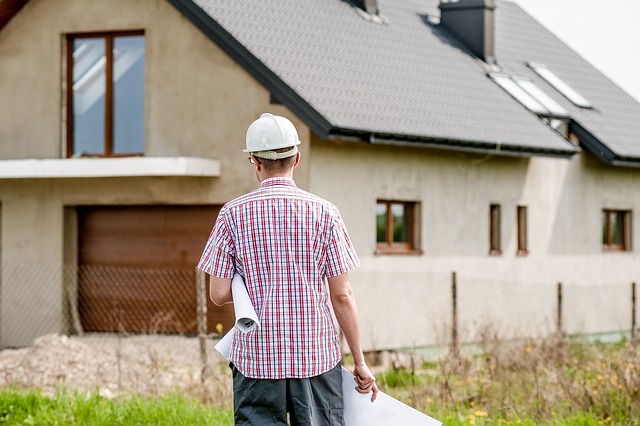When embarking on home repairs, safety is paramount, with a well-informed approach and meticulous planning being essential for a secure living environment. Handymen should carefully assess the task at hand to determine the scope of work, necessary tools, and materials. All equipment must be checked for functionality and maintained; replacements or repairs should be made as needed. Strict adherence to manufacturer instructions and safety protocols is crucial, especially when using ladders, power tools, or hazardous chemicals. Proper protective gear, including gloves, safety glasses, and steel-toed boots, must be worn at all times. For electrical work, it's essential to comply with local building codes and regulations. Complex systems like gas lines should be handled by professionals. Ensure excellent ventilation in areas involving sanding, painting, or solvent use to maintain air quality and prevent accidents. Maintain a clear workspace to avoid tripping hazards and set up barriers around construction zones. By following these handyman tips, you can significantly reduce the risk of injury or property damage while optimizing the safety of your home repair endeavors. Always prioritize safety and acknowledge your limitations to handle repairs confidently and securely with Handyman Tips guiding your practice.
When embarking on home repairs, safety should be your top priority. A secure environment is not just about the end result but also ensuring that every step of the process is carried out with caution. This comprehensive guide, “Safety Precautions for Home Repairs: A Handyman’s Guide to Secure Environments,” provides essential handyman tips and a step-by-step approach to navigate repairs without compromising your well-being. From pre-repair assessments to post-cleanup, we cover all aspects of home maintenance to keep you and your property safe. By adhering to the detailed safety measures outlined, you can confidently undertake repairs, transforming your living space into a secure haven while maintaining its integrity.
- Essential Safety Measures for Home Repairs: A Handyman's Guide to Secure Environments
- 1. Pre-Repair Assessment: Identifying Hazards and Mitigating Risks
Essential Safety Measures for Home Repairs: A Handyman's Guide to Secure Environments

When undertaking home repairs, safety should be your top priority to ensure a secure environment. A handyman must approach each task with caution and knowledge of potential risks. Proper planning is paramount; assess the scope of work beforehand to anticipate the tools and materials required. Ensure that all equipment is in good working condition, and replace or repair any faulty components. Use ladders, power tools, and chemicals safely by following manufacturer guidelines, wearing appropriate protective gear such as gloves, safety glasses, and steel-toed boots, and keeping first aid supplies close at hand.
For electrical repairs, always adhere to local building codes and regulations. If dealing with complex systems or high-risk tasks like gas line work, it’s wise to consult with a professional. Good ventilation is essential when sanding, painting, or working with solvents; avoid overcrowding the workspace to prevent accidents. Clear the area of unnecessary clutter that could pose tripping hazards. Lastly, always secure your work environment by ensuring stairs and walkways are clear, and use barriers around open holes or walls if necessary. By following these handyman tips, you can create a safer workspace and reduce the risk of injury or property damage during home repairs.
1. Pre-Repair Assessment: Identifying Hazards and Mitigating Risks

When undertaking home repairs, a thorough pre-repair assessment is crucial to ensure that the work environment is safe and hazard-free. Homeowners or handymen should start by identifying potential risks associated with the specific repair task at hand. This includes checking for loose electrical wiring, ensuring stable scaffolding or ladders for height-related repairs, and being aware of any structural weaknesses that could pose a danger during the repair process. Proper ventilation is essential when dealing with painting or using adhesives or chemicals; opening windows or using air purifiers can mitigate the risks of inhalation. Safety gear such as gloves, goggles, and dust masks should be worn to protect against cuts, eye injuries, and respiratory issues, respectively. Additionally, it’s important to secure any tools or materials that could cause tripping or other accidents. By carefully assessing these factors and implementing necessary safety measures, handymen can work efficiently while minimizing the risk of injury or property damage. Handyman Tips: Always keep a first-aid kit readily available, test electrical circuits with a voltage detector before working, and never attempt repairs that exceed your skill level or understanding, as this could lead to more significant problems and increased risks.
In wrapping up our discussion on home repairs, it’s clear that adherence to safety measures is paramount for a secure environment. A handyman’s guide to secure environments emphasizes the importance of conducting a thorough pre-repair assessment to identify potential hazards and mitigate associated risks. By following handyman tips for safety, homeowners can prevent accidents and protect their property from unnecessary damage. Remember to wear appropriate protective gear, use tools and equipment correctly, and never attempt repairs beyond your skill level. With diligence and attention to detail, you can ensure that your DIY projects contribute to a safer home.
